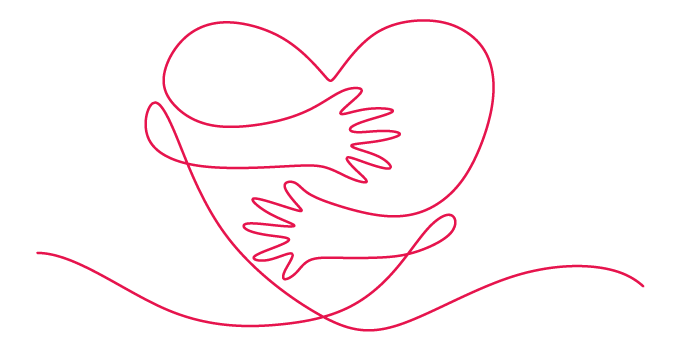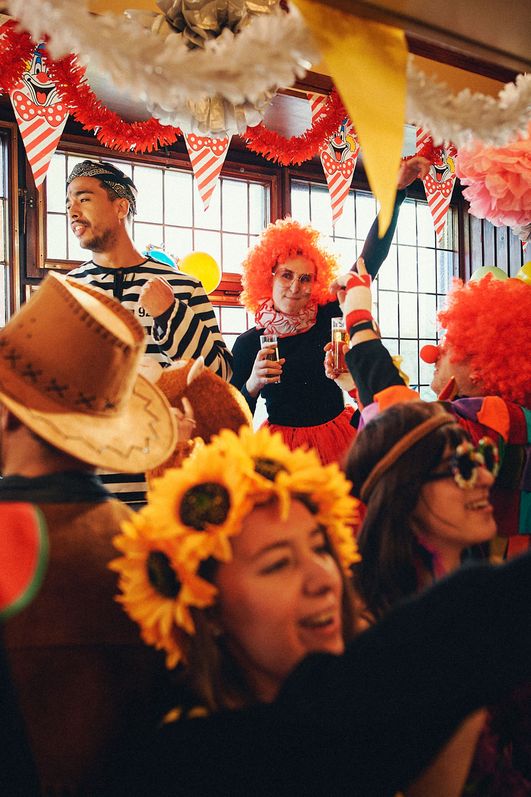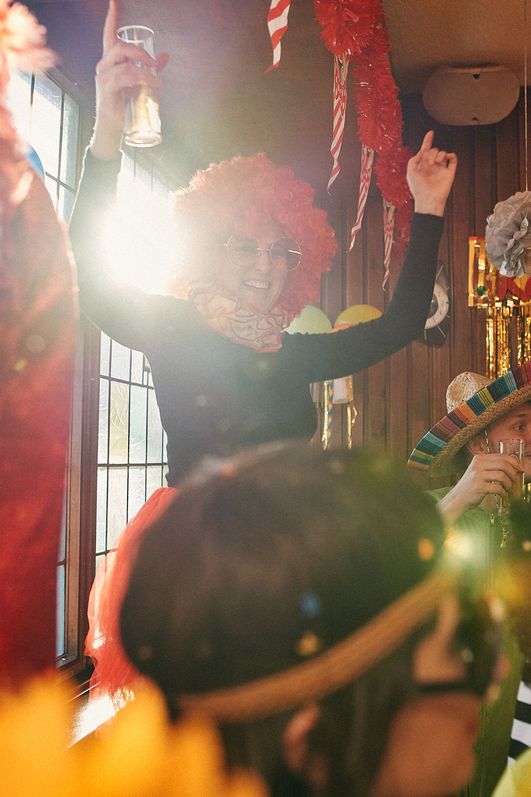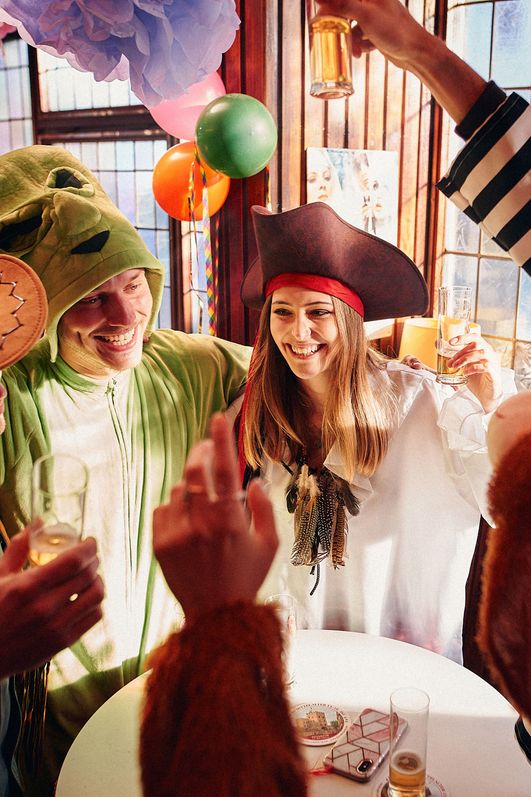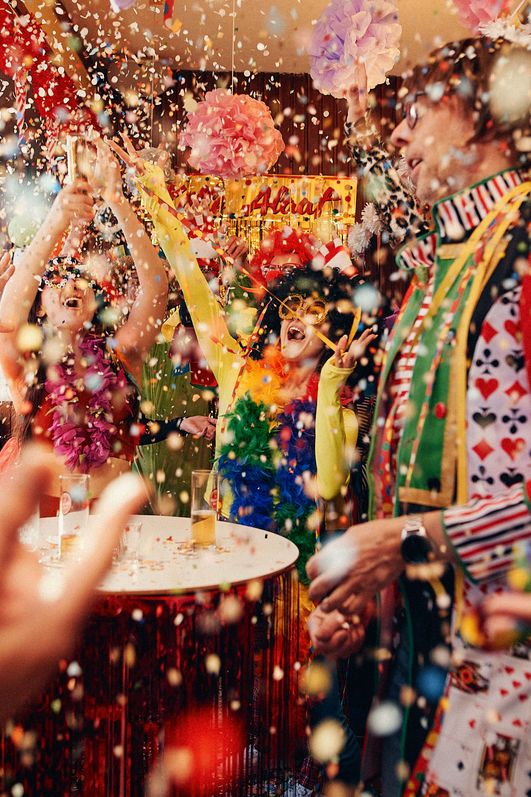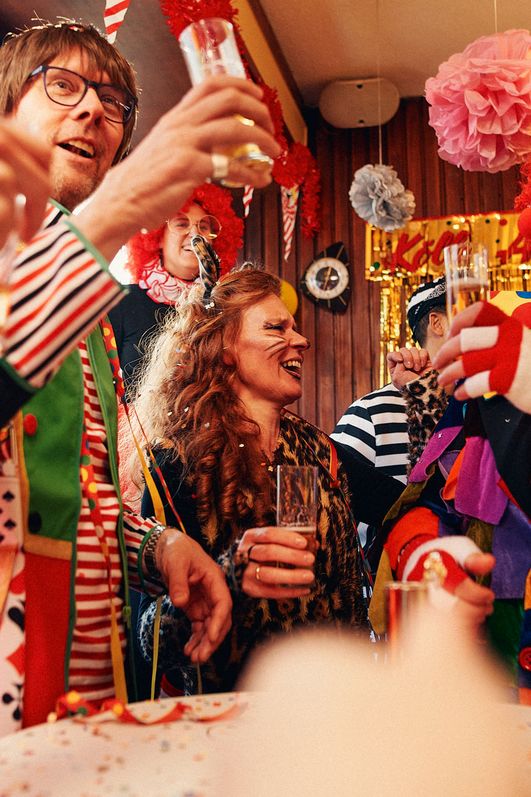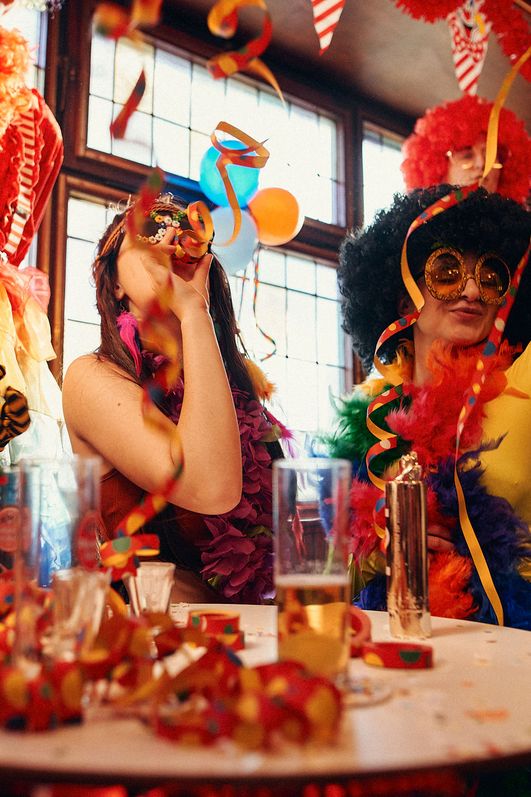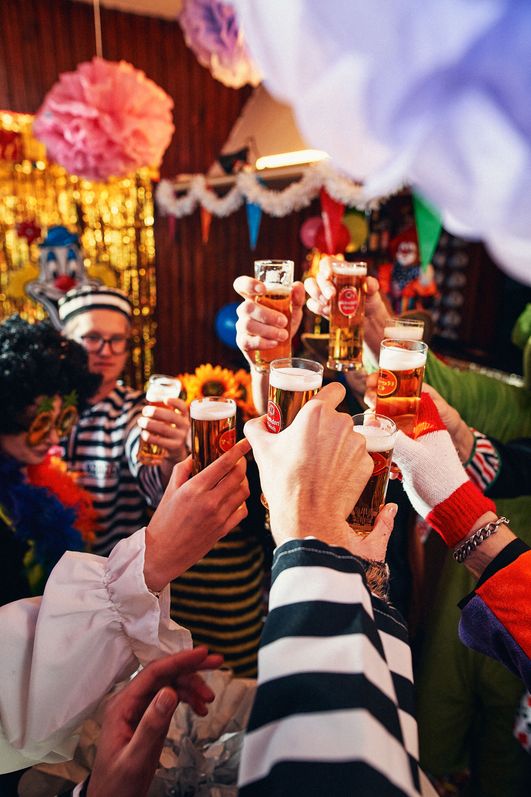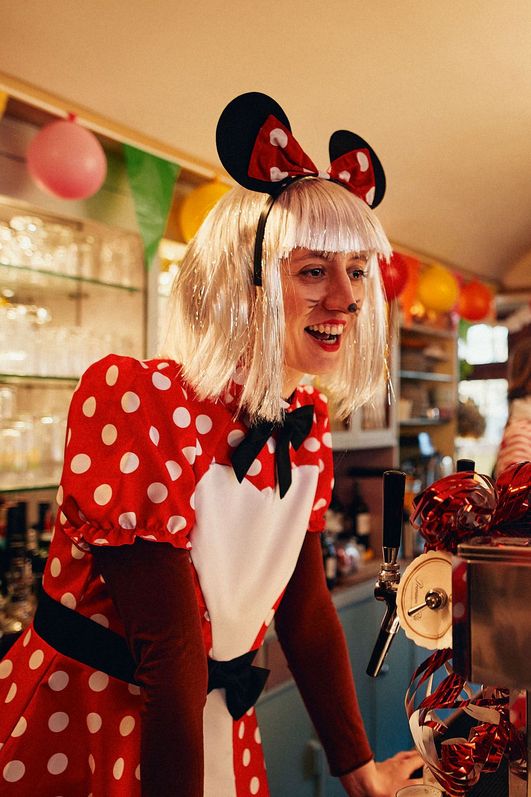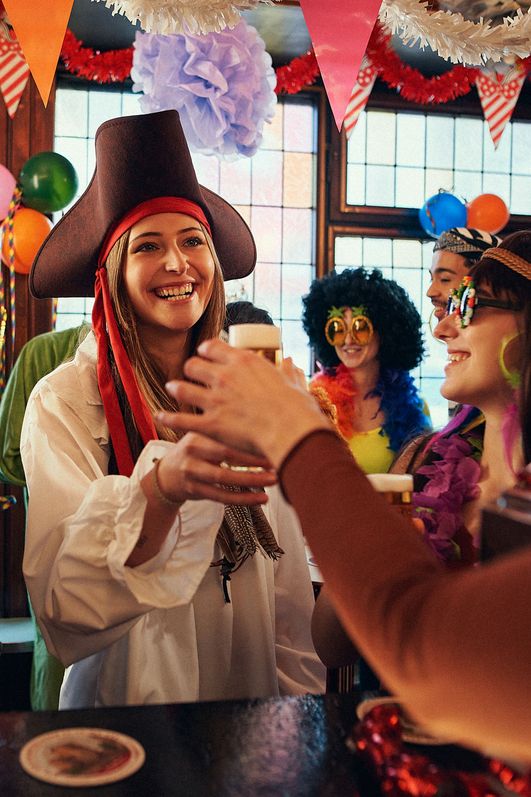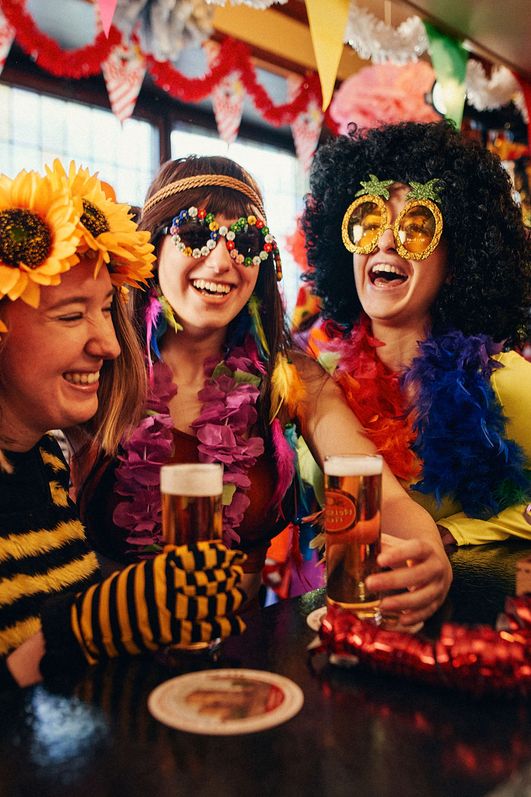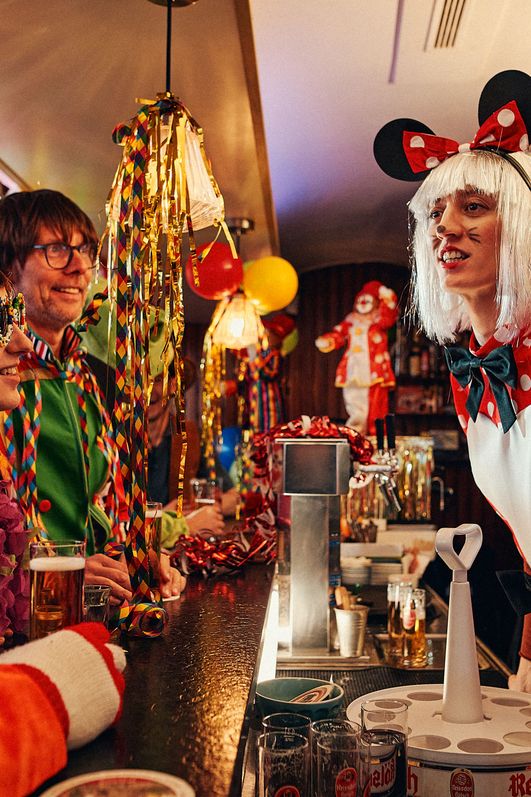Carnival in Cologne
Kölle alaaf!
From pub to pub — in the open air: when the drum beats…
When is Carnival? During the six days between Weiberfastnacht — the Women’s Carnival — and Veilchendienstag — Violet Tuesday — the revellers, who are known as Jecken, come out in force to celebrate Carnival, which is also known as the “fifth season” of the year. As the saying has it, on Ash Wednesday it’s all over — but in the meantime, Cologne is turned upside down all over again every year. In fact, the street Carnival actually starts in the Alter Markt (Old Market) at 11:11 a.m. on Thursday — Weiberfastnacht — and continues until the evening of Violet Tuesday.
The Street Carnival in Cologne is a unique folk festival in the Rhineland that casts its spell over millions of visitors year after year. If you travel here to enjoy the age-old traditions of smooching and swaying, you’re in good hands in the Carnival stronghold of Cologne with its 480 Carnival associations.
The most important dates of the session
-
Start of the session 2025/2026: Tuesday, 11 November 2025
-
Weiberfastnacht: Thursday, 12 February 2026
-
Carnival Friday: Friday, 13 February 2026
-
Carnival Saturday: Saturday, 14 February 2026
-
Carnival Sunday: Sunday, 15 February 2026
-
Rose Monday: Monday, 16 February 2026
-
Violet Tuesday: Tuesday, 17 February 2026
-
Ash Wednesday: Wednesday, 18 February 2026
5 crazy days — from Weiberfastnacht to Violet Tuesday
The Street Carnival officially begins on Thursday — Weiberfastnacht, or the Women’s Carnival. In many neighbourhoods throughout the city, celebrations involve handing over the keys. Many companies throw their own Carnival parties, shops stay closed, and costumed celebrants flock to celebrate in their associations, favourite pubs or with friends. The fun starts in the early morning and continues until late at night in the Altstadt (Old Town) and the popular Südstadt district. If you’re wearing a tie, prepare for the worst: The tradition of “crazy women” cutting off men’s ties is still flourishing. The first Carnival parade marches through Cologne's old town on Weiberfastnacht.
Street Carnival: sessions and parades
Most of the Carnival sessions are held on Carnival Friday — and so are the traditional parades of Cologne’s local Carnival associations, which converge in the city centre. Here the Carnival artists celebrate until the late evening. On Saturday morning, the Carnival association “Kölsche Funke rut-wieß vun 1823” stages its “Funkenbiwak” open-air session on the Neumarkt (New Market). If you buy a “Funkenstange” beer glass, you can have it filled up with Kölsch at one of the beer stands free of charge. Some of the Veedelszüge — the smaller local Carnival parades — are held in the various neighbourhoods on Saturday.
Geisterzug, Veedelzüge, school parades at the weekend
The famous Geisterzug, or “ghost parade”, is held on Saturday evening - one week before Carnival. It’s an alternative Carnival parade with political overtones that you can join spontaneously, as a figure of gloom or a brightly shining spirit. There’s no need to register beforehand! The route changes every year, depending on the annual theme. It’s been part of the Street Carnival in Cologne since 1991, but this tradition goes back even further, to 1860.
Tulip Sunday features more school parades and Veedelszüge (local parades) as well as more Carnival sessions with humorous speeches, singing and good cheer. If you think no one could possibly manage so much celebration, you’ll be surprised: it’s incredible how much enthusiasm Carnival generates in Cologne!
Rose Monday: the climax of Carnival
More than a million people visit Cologne regularly - just for the Rosenmontag parade. This carnival parade, which passes through Cologne city centre, is considered one of the largest parades in Germany. And being part of it is everything.
The parade has been rolling since 1823 - with floats, foot groups, dance groups and music bands - led by the "Blaue Funken" in the Cologne tradition. With a length of around 8 kilometres, the Rosenmontag parade covers a larger distance than its route. Around 300 tonnes of sweets change the owner here in a perfect throwing technique - and around 300,000 "Strüßjer" (flowers) express their affection. The highlight and end of the parade are also certain: the moment when "D'r Prinz kütt" ("The Prince arrives").
Violet Tuesday: neighbourhood parades and burning the Nubbel
On the last day of the Street Carnival, the biggest neighbourhood parades march through Nippes, Ehrenfeld and Mülheim, with up to 200,000 enthusiastic spectators lining the sidewalks.
The evening ceremony of burning the Nubbel, a scarecrow-like figure stuffed with straw, in front of many pubs marks the end of the “fifth season”. He’s a scapegoat who takes all the excesses of the Carnival season with him as he burns down into ashes and restores the celebrants to a state of innocent forgetfulness. Isn’t that lucky!
Street Carnival facts and figures: did you know?
As a social phenomenon and an economic factor, Carnival means more than colorful costumes and joyful celebrations. For example, over 100 Carnival associations work together in the Cologne Carnival festival committee to organize the “crazy days” of the Street Carnival. During an average parade, 330,000 kilogrammes of sweets, 700,000 chocolate bars and 220,000 boxes of pralines rain down on the enthusiastic spectators. Kölle alaaf!
FAQ
The theme of the 2026 Cologne Carnival season is "ALAAF - Mer dun et för Kölle" (ALAAF - We do it for Cologne).
The street carnival begins on Weiberfastnacht (12 February 2026), which is the Thursday before Rose Monday (16 February 2026). There is a traditional cycle of sessions, balls and parades that takes place until Violet Tuesday (17 February 2026). The people celebrate, sing and dance in various halls, restaurants and pubs. During this time, normal life is suspended throughout Cologne. Many public institutions are closed, and Prince Carnival rules.
The Cologne cheer is “Kölle Alaaf.” “Helau” is the cheer in Mainz and Düsseldorf and thus is never used in Cologne under any circumstances.
“Kölle Alaaf” is the cheer of the carnival revellers. It is derived from a medieval toast: “All ab” (All-av). It more or less means “Cologne alone” or “Cologne over everything.” It’s the shortest imaginable declaration of love to Cologne.
The “Nubbel” is a straw-filled doll that serves as the scapegoat for all of the transgressions that the revellers have committed during the days of carnival. The associated torchlight processions are held in the night from Violet Tuesday to Ash Wednesday. Impressive Nubbel burnings take place next to St. Agnes Church, in Nippes, in Südstadt, in Kwartier Latäng and in the Old Town (Altstadt).
Bützjer are friendly pecks on the cheek, and they have nothing to do with real kissing. A Bützje is not a silly attempt to flirt with you; during carnival it is part of the tradition and happens all the time.
Kölle alaaf!
Just one click to the city vacation
Accommodation options for every taste
KölnCard
The official tourist ticket
Would you like to discover Cologne inexpensively and easily? Then we recommend the KölnCard. The tourist ticket offers you free travel on all public transport and great discounts on art, culture and gastronomy.
